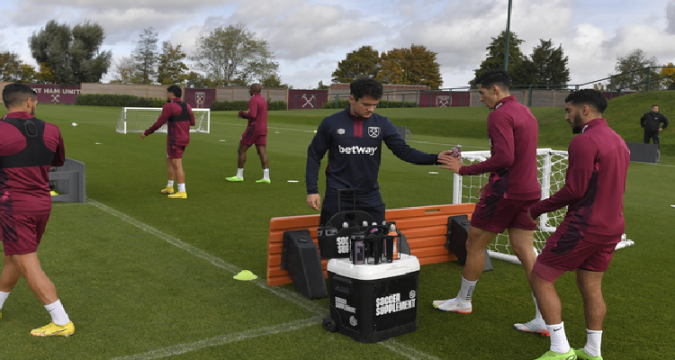
The life of a professional football player may seem glamorous, but it’s filled with rigorous routines and discipline. Each day is designed to maximize physical performance, improve skills, and support overall health and well-being. For football players, training sessions, tactical meetings, strength and conditioning work, recovery, and even media responsibilities are integral parts of the daily routine. Here’s a look into the daily life of a football player, highlighting the physical, mental, and tactical preparation they undergo to stay at peak performance.
1. Morning Preparation and Arrival at the Club
The day usually begins early for football players. Many arrive at the club’s facilities well before the first training session. Their morning routines often involve stretching and light warm-up exercises to get their bodies ready for the day’s workload. Some players will also take advantage of the club’s gym facilities for additional personal fitness routines or rehabilitation work.
Upon arrival, players often have a quick consultation with the club’s medical and fitness staff, who assess their condition and address any minor injuries or soreness. Preventive care, such as massages, physical therapy, and even personalized warm-ups, are common to ensure each player’s physical readiness. Nutrition is also a crucial aspect of preparation; most clubs provide a healthy breakfast to fuel the players, designed by nutritionists to support high-energy workouts. Typically, these meals are rich in proteins, complex carbohydrates, and hydration to keep energy levels stable throughout the morning.
2. Team Training and Tactical Drills
Once prepared, players gather for the first major event of the day: team training. Training typically includes a variety of activities designed to develop skills, improve fitness, and reinforce tactical strategies. Coaches work with players on ball control, passing accuracy, shooting, and defensive maneuvers. These skill-focused drills help keep their abilities sharp and are often tailored to the upcoming match’s specific requirements.
Following individual drills, players participate in tactical exercises as a team. Coaches use these sessions to rehearse game plans and strategies, focusing on formations, offensive and defensive patterns, and set pieces like corners and free-kicks. Tactical training ensures every player understands their role on the field and how they can work effectively within the team’s structure. During these sessions, players also review past matches or observe video footage of the opposition, allowing them to understand their opponent’s tactics and prepare accordingly.
Team training can be physically demanding, and players are carefully monitored to prevent over-exertion. Strength and conditioning coaches track each player’s workload to optimize performance without risking injury. These sessions are crucial for building stamina and teamwork, both essential elements of success on match day.
3. Strength and Conditioning Work
After team training, players often head to the gym for strength and conditioning work. These sessions are customized based on each player’s role and physical requirements. For example, strikers might work on explosive leg strength for speed and agility, while defenders focus on upper-body strength to handle physical challenges.
The gym routine is often balanced between strength exercises, cardio workouts, and flexibility training. Strength and conditioning help players maintain endurance, prevent injuries, and recover quickly. Additionally, these workouts are planned according to the week’s match schedule, with lighter sessions closer to game days to ensure players are not fatigued. The goal is to improve each player’s overall athletic performance, making them more resilient and effective on the pitch.
4. Recovery and Rehabilitation
Recovery is as essential as training, and most clubs incorporate it into daily routines. Following the intense physical activity of training sessions and gym workouts, players engage in various recovery techniques, such as ice baths, massages, and stretching sessions to reduce muscle soreness and inflammation.
Some clubs also offer advanced recovery technologies like cryotherapy and hydrotherapy pools to help players recover more quickly. The medical staff keeps a close eye on players with lingering injuries, offering physiotherapy or tailored rehabilitation exercises to support recovery without interfering with training progress. Recovery not only improves physical health but also plays a major role in sustaining mental focus and morale, which is crucial in a demanding sport like football.
5. Media Obligations and Fan Engagement
Part of a player’s day often involves media appearances or promotional work, especially for high-profile players. Clubs have dedicated media days or short sessions for interviews, social media content, and fan engagement activities. Players may meet fans, sign autographs, or participate in community outreach programs, which help strengthen the club’s connection to its supporters.
Engaging with fans and fulfilling media duties are part of a player’s role, though they are typically scheduled around training and recovery sessions. Media and community obligations provide opportunities for players to connect with fans, who are a vital part of the club’s identity and success.
6. Review and Reflection with Coaches
At the end of the day, players often gather for a review session with their coaches, analyzing the day’s performance, discussing key takeaways, and reviewing tactical concepts. These sessions allow players to receive feedback, reflect on areas for improvement, and solidify their understanding of team strategies.
Players may also watch video footage to correct technical errors, develop game awareness, and mentally prepare for future matches. For young players or those new to the club, these meetings are invaluable in adapting to the club’s style and expectations. This process helps players continuously develop their skills and refine their approach to each upcoming game.
Conclusion
A day in the life of a professional football player is far more structured and intensive than it might appear. From early-morning routines and intense training to strength work, recovery, media obligations, and tactical reviews, each aspect of a player’s day is designed to maximize performance and support career longevity. By adhering to these rigorous schedules, players build the resilience, focus, and skills needed to compete at the highest level and contribute to their team’s success. This balance between training, preparation, and club duties ensures they’re ready for whatever challenges the game may bring.